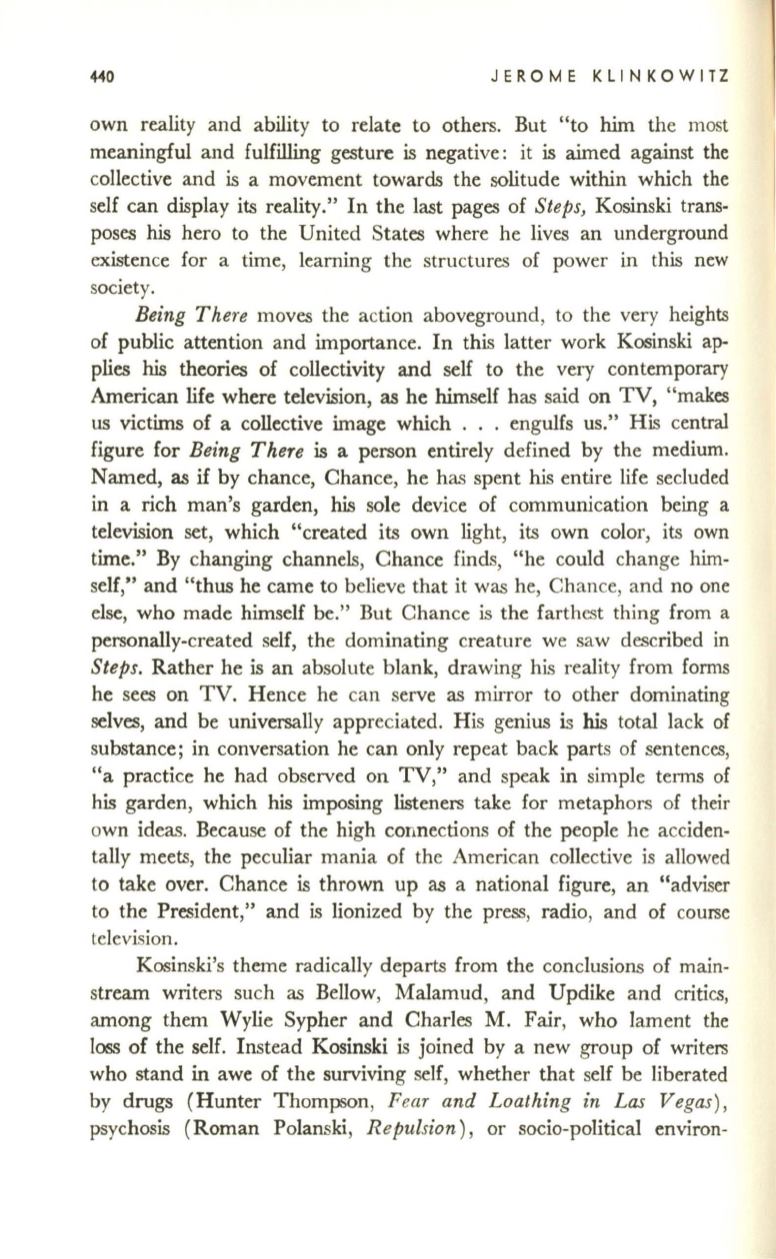
440
JEROME KLINKOWITZ
own reality and ability to relate to others. But "to
him
the most
meaningful and fulfilling gesture is negative: it is aimed against the
collective and is a movement towards the solitude within which the
self can display its reality." In the last pages of
Steps,
Kosinski trans–
poses
his
hero to the United States where he lives an underground
existence for a time, learning the structures of power
in
this new
society.
Being There
moves the action aboveground, to the very heights
of public attention and importance. In this latter work Kosinski ap–
plies
his
theories of collectivity and self to the very contemporary
American life where television, as he himself has said on TV, "makes
us victims of a collective image which . . . engulfs us." His central
figure for
Being There
is a person entirely defined by the medium.
Named, as
if
by chance, Chance, he has spent his entire life secluded
in a rich man's garden, his sole device of communication being a
television set, which "created its own light, its own color, its own
time." By changing channels, Chance finds, "he could change
him–
self," and "thus he came to believe that it was he, Chance, and no one
else, who made himself be." But Chance is the farthest thing from a
personally-created self, the dominating creature we saw described in
Steps.
Rather he is an absolute blank, drawing his reality from forms
he sees on TV. Hence he can serve as mirror to other dominating
selves, and be universally appreciated. His genius
is
his
total lack of
substance; in conversation he can only repeat back parts of sentences,
"a practice he had observed on TV," and speak in simple terms of
his garden, which his imposing listeners take for metaphors of their
own ideas. Because of the high connections of the people he acciden–
tally meets, the peculiar mania of the American collective
is
allowed
to take over. Chance is thrown up as a national figure, an "adviser
to the President," and
is
lionized by the press, radio, and of course
television.
Kosinski's theme radically departs from the conclusions of main–
stream writers such as Bellow, Malamud, and Updike and critics,
among them Wylie Sypher and Charles M. Fair, who lament the
loss of the self. Instead Kosinski
is
joined by a new group of writers
who stand
in
awe of the surviving self, whether that self be liberated
by drugs (Hunter Thompson,
Fear and Loathing in Las Vegas ),
psychosis (Roman Polanski ,
R epulsion) ,
or socio-political environ-


